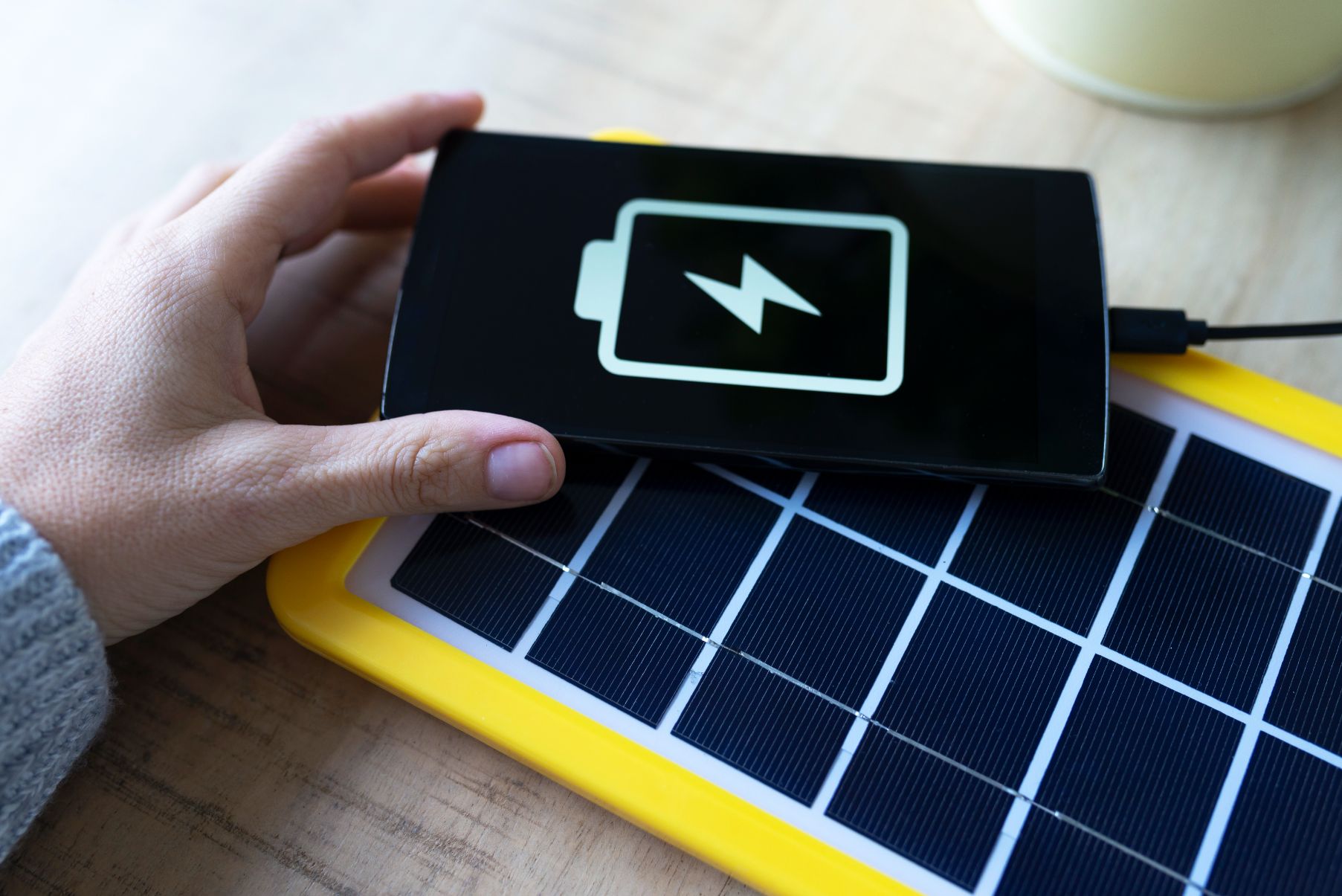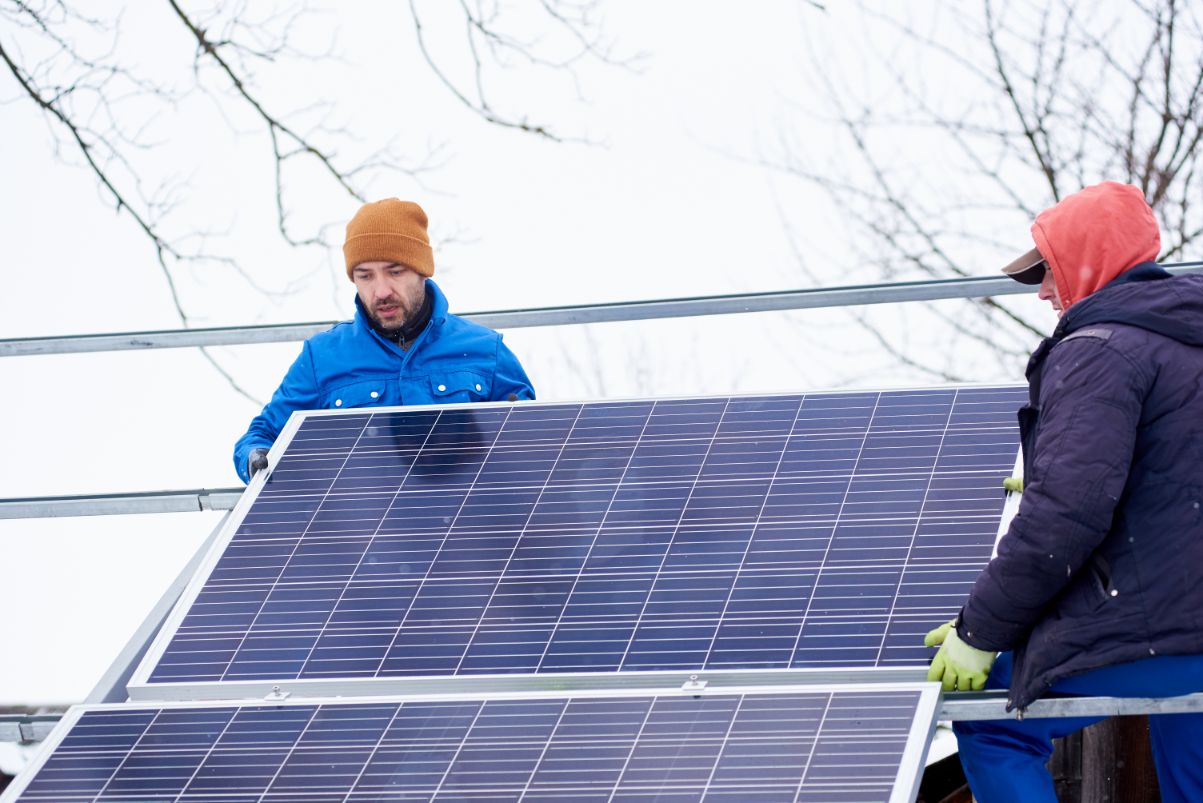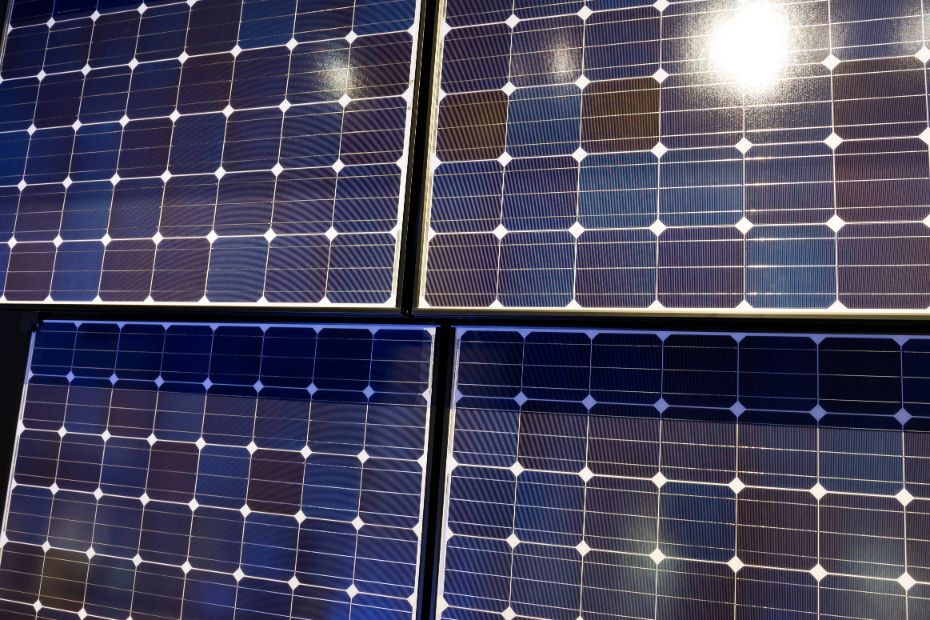Solar battery solutions involve the integration of solar power systems with energy storage technologies, allowing us to capture and store excess energy generated from sunlight. This stored energy can then be utilized during times when sunlight is scarce or during peak demand periods, ensuring a continuous and reliable supply of clean electricity. With the ability to store energy for later use, solar battery solutions play a crucial role in reducing reliance on fossil fuels, mitigating climate change, and building a greener and more sustainable world.
The Importance of Solar Battery Solutions in Achieving a Sustainable Future
As we gaze toward a sustainable future, it becomes evident that solar battery solutions play a crucial role in harnessing and storing renewable energy. Gone are the days when we relied solely on fossil fuels to power our homes and businesses. Solar energy has emerged as a clean and abundant source of power, but the challenge lies in ensuring a continuous supply of electricity when the sun sets or on cloudy days. This is where solar battery solutions step in, providing us with a means to store excess energy generated during sunny periods and use it later when sunlight is scarce.
One of the key benefits of solar battery solutions is their ability to increase energy self-sufficiency. By storing surplus solar energy, households, and businesses can reduce their reliance on the grid during non-peak hours or in the event of power outages. Imagine never having to worry about blackouts or soaring electricity bills! With a robust solar battery system in place, you can maintain a steady power supply and take control of your energy consumption. It’s not only empowering but also financially rewarding, as you become less dependent on fluctuating utility rates.
Moreover, solar battery solutions are essential for optimizing the integration of renewable energy sources into the existing power grid. The intermittent nature of solar energy production can pose challenges to grid stability. However, by storing excess energy in batteries, we can smooth out the supply-demand curve, reducing strain on the grid during peak hours and ensuring a more reliable and resilient energy system. This not only benefits individual consumers but also contributes to the overall stability and efficiency of the electricity network. Solar battery solutions enable us to strike a balance between decentralized energy production and centralized grid management, paving the way for a sustainable and intelligent energy infrastructure.
In addition to their practical advantages, solar battery solutions have a positive environmental impact. By storing solar energy instead of relying on fossil fuel-powered generators or drawing energy from the grid, we reduce carbon emissions and mitigate climate change. Solar power is a renewable and clean energy source, but without effective storage solutions, much of its potential is wasted. With solar battery systems, we can make the most of the abundant sunlight, reducing our carbon footprint and preserving the planet for future generations.
Solar battery solutions are a game-changer when it comes to achieving a sustainable future. They provide us with the means to store excess solar energy, increase energy self-sufficiency, optimize grid integration, and reduce environmental impact. With their help, we can transition away from fossil fuels, embrace renewable energy, and pave the way toward a greener and brighter tomorrow. So, let’s harness the power of the sun and unlock the full potential of solar energy with innovative and efficient solar battery solutions.
Understanding the Role of Energy Storage in Solar Systems

When it comes to solar systems, energy storage plays a pivotal role in ensuring a sustainable and reliable energy supply. While solar panels are the stars of the show, generating clean electricity from sunlight, it’s the energy storage component that truly takes the performance to the next level. So, let’s delve into the world of energy storage and uncover its vital role in solar systems.
At its core, energy storage in solar systems allows us to capture and store excess energy produced during sunny periods. This stored energy can then be used when solar power generation is insufficient, such as during nighttime or cloudy days. Think of it as a battery that holds the sun’s energy for later use. By incorporating energy storage, we overcome the limitations of solar power’s intermittency and ensure a continuous supply of electricity. It’s like having a reserve tank of solar power, ready to kick in when the sun takes a break.
But why is energy storage so important for solar systems? Well, for starters, it enhances the self-consumption of solar energy. Instead of exporting excess energy back to the grid, which often results in low compensation rates, you can store it for your own consumption. This means you maximize the use of the clean energy you generate, reducing your dependence on grid power and saving money in the process. It’s a win-win situation for your wallet and the environment.
Energy storage in solar systems contributes to grid stability and resilience. With solar power becoming more prevalent, the challenge lies in integrating this decentralized energy into the existing grid. Energy storage acts as a buffer, smoothing out the fluctuations in solar power generation and providing a steady supply of electricity. It helps balance the supply and demand equation, reducing strain on the grid during peak periods and enhancing overall system reliability. By reinforcing the grid with energy storage, we create a robust and flexible energy infrastructure that can adapt to the changing dynamics of renewable energy generation.
It allows us to store excess solar energy for later use, maximizing self-consumption and reducing reliance on the grid. Energy storage also plays a vital role in grid stability and resilience, enabling the integration of decentralized solar power into the existing infrastructure. So, as we embrace solar energy, let’s not forget the indispensable role of energy storage in harnessing the sun’s power and paving the way toward a cleaner and more sustainable world.
How Solar Battery Solutions Help to Overcome Renewable Energy Challenges

Renewable energy sources, such as solar power, have made significant strides in recent years, but they still face certain challenges that hinder their widespread adoption. This is where solar battery solutions swoop in like superheroes, providing crucial support in overcoming these obstacles and paving the way for a sustainable future. Let’s explore how solar battery solutions come to the rescue and tackle renewable energy challenges head-on.
One of the primary challenges with renewable energy sources is their intermittent nature. Sunlight isn’t available 24/7, and this can lead to fluctuations in energy generation. Solar battery solutions act as guardians of consistency, capturing excess energy produced during peak periods and storing it for later use. When the sun sets or clouds roll in, these batteries kick into action, ensuring a continuous and reliable supply of electricity. It’s like having an energy safety net, preventing dips in power output and eliminating the need for backup generators or relying solely on the grid. Solar battery solutions truly save the day by making renewable energy a more dependable and accessible option for everyone.
Another challenge renewable energy faces is the integration into the existing power grid. Unlike traditional centralized power generation, renewable energy sources are decentralized and distributed. This can pose challenges for grid stability and management. However, solar battery solutions come equipped with a superpower called grid integration optimization. By storing excess solar energy and releasing it strategically when demand is high or supply is low, these batteries help balance the grid, smoothing out the peaks and valleys of renewable energy production. They ensure a harmonious coexistence between solar power and the grid, enabling a seamless transition to a sustainable energy ecosystem.
Not all regions have easy access to a reliable grid, and this limits their ability to tap into clean energy sources. Solar battery solutions act as energy champions, empowering these communities to harness solar power and store it for later use. Whether it’s a remote village, an isolated island, or a mobile research station, solar battery solutions provide a lifeline of sustainable energy, untethered from the constraints of traditional infrastructure. They bring light, power, and hope to those who have long been left in the dark.
They provide a steady supply of electricity, balance the grid, and extend energy access to remote areas. With solar battery solutions in our arsenal, we can overcome the intermittency of renewable energy, enhance grid stability, and create a more inclusive and resilient energy landscape. So, let’s embrace these innovative solutions and unleash the true potential of solar power for a brighter and greener tomorrow.
Exploring the Different Types of Solar Batteries Available Today

When it comes to solar battery solutions, there is a wide array of options available on the market today. These diverse types of solar batteries each come with their own unique characteristics, offering various benefits and features. Let’s embark on a journey to explore the fascinating world of solar batteries and discover the different types that can power our sustainable future.
Lithium-Ion Batteries:
The superheroes of solar battery solutions, lithium-ion batteries have gained immense popularity due to their high energy density, efficiency, and longer lifespan. Just like the Iron Man suit, these batteries pack a powerful punch in a compact size. They are lightweight, require minimal maintenance, and can withstand numerous charge-discharge cycles. Lithium-ion batteries are a top choice for residential solar energy storage systems, providing reliable and long-lasting performance.
Lead-Acid Batteries:
Considered the wise old veterans of solar batteries, lead-acid batteries have been around for decades and are still widely used today. They are the Captain America of the battery world, known for their ruggedness and affordability. While lead-acid batteries have a lower energy density and shorter lifespan compared to lithium-ion batteries, they make up for it with their reliability and lower upfront cost. They are commonly used in off-grid solar installations and backup power systems.
Flow Batteries:
With the shape-shifting Mystique of solar batteries, flow batteries offer a unique approach to energy storage. Unlike traditional batteries that store energy in solid materials, flow batteries store it in liquid electrolytes. This design allows for scalable energy storage and flexible capacity adjustments. Flow batteries excel in applications where long-duration storage and frequent charge-discharge cycles are required. While still in the early stages of adoption, flow batteries show great promise for large-scale solar energy storage and grid-level applications.
Sodium-Ion Batteries:
The rising stars of solar batteries, sodium-ion batteries are gaining attention as a potentially more affordable and environmentally friendly alternative to lithium-ion batteries. They utilize sodium ions instead of lithium ions for energy storage, making them abundant and cost-effective. While sodium-ion batteries are still undergoing research and development, they hold promise for future advancements in renewable energy storage, offering a sustainable and accessible solution for energy storage needs.
Each type brings its own set of advantages and capabilities, contributing to the collective goal of storing energy for a sustainable future. So, let’s explore these diverse options and harness the potential of solar battery solutions to power our greener tomorrow.
Maximizing Energy Efficiency: Harnessing Solar Power and Battery Storage Together

When it comes to maximizing energy efficiency and achieving a sustainable future, the dynamic duo of solar power and battery storage takes center stage. These two superheroes team up to create an unstoppable force, revolutionizing the way we generate, store, and utilize clean energy. Let’s delve into the world of harnessing solar power and battery storage together and explore how this powerful alliance boosts energy efficiency.
Solar power, derived from the sun’s abundant rays, provides a renewable and clean source of electricity. However, its intermittent nature poses a challenge when it comes to meeting continuous energy demands. This is where battery storage swoops in to save the day. By coupling solar power systems with battery storage, we unlock the ability to capture and store excess energy during sunny periods and use it later when the sun isn’t shining. It’s like having a trusty sidekick that holds the fort when the main hero takes a break.
This collaboration not only ensures a steady supply of clean energy but also maximizes energy efficiency. Solar power systems generate electricity directly from sunlight, converting it into usable energy without the need for fossil fuels. By storing excess solar energy in batteries, we avoid wastage and optimize the use of renewable resources. This dynamic duo helps us reduce our reliance on conventional energy sources and lowers our carbon footprint. It’s a win-win situation for both the environment and our wallets.
Moreover, harnessing solar power and battery storage together promotes energy self-sufficiency. With this powerful alliance, households and businesses can become energy independent, reducing their dependence on the grid and lowering electricity costs. During peak solar production periods, excess energy can be stored in batteries, which can then be used during non-peak hours or when solar power generation is limited. It’s like having a personal energy bank that lets you withdraw clean power whenever you need it. This level of control not only empowers individuals but also contributes to a more resilient and decentralized energy system.
The combination of solar power and battery storage is a force to be reckoned with in maximizing energy efficiency and achieving a sustainable future. By harnessing the sun’s power and storing excess energy in batteries, we create a reliable and continuous supply of clean electricity. This collaboration reduces waste, promotes energy self-sufficiency, and drives us closer to a greener and more sustainable world. So, let’s embrace this powerful alliance and unlock the full potential of solar power and battery storage for a brighter and more energy-efficient future.
The Environmental Benefits of Solar Battery Solutions

Solar battery solutions not only offer a sustainable and reliable energy storage option but also bring a multitude of environmental benefits to the table. As we strive for a greener and more sustainable future, it’s essential to understand how solar battery solutions contribute to the preservation of our planet. Let’s dive into the captivating realm of their environmental benefits and discover how they help shape a cleaner and healthier world.
First and foremost, solar battery solutions play a vital role in reducing carbon emissions. Traditional energy sources, such as fossil fuels, release harmful greenhouse gases into the atmosphere when burned for electricity generation. By relying on solar power stored in batteries instead, we break free from this carbon-intensive cycle. Solar energy is clean and renewable, producing zero emissions during power generation. The integration of solar battery solutions allows us to maximize the utilization of this abundant energy source, significantly reducing our carbon footprint and mitigating the impacts of climate change.
Furthermore, solar battery solutions help alleviate the strain on natural resources. Fossil fuel extraction and combustion have severe environmental consequences, including habitat destruction, air and water pollution, and the depletion of finite resources. By embracing solar energy and storing it in batteries, we minimize the need for fossil fuel-based power generation. This, in turn, reduces the demand for coal, oil, and gas, preserving ecosystems and minimizing the ecological footprint of our energy systems. Solar battery solutions are like guardians of nature, enabling us to tap into renewable resources without depleting or damaging them.
Solar battery solutions promote energy independence and resilience. Traditional power grids are vulnerable to disruptions, such as natural disasters or infrastructure failures. However, with solar energy stored in batteries, we can create decentralized and self-sufficient energy systems. This means that even during power outages or emergencies, households, businesses, and communities can still access electricity from their stored solar energy. Solar battery solutions enhance energy resilience, reducing our reliance on centralized grids and increasing our ability to adapt and recover in the face of adversity.
They enable us to reduce carbon emissions, protect natural resources, and enhance energy independence. By harnessing solar power and storing it in batteries, we pave the way for a cleaner, greener, and more sustainable future. Let’s embrace these innovative solutions and unleash their environmental superpowers to preserve our planet for generations to come.
Empowering Communities with Solar Battery Solutions: Off-Grid and Resilient Energy Access

Solar battery solutions not only contribute to a sustainable future but also hold the power to transform lives and empower communities. In many parts of the world, access to reliable electricity is still a luxury. However, the combination of solar power and battery storage presents an opportunity to bridge this energy gap and provide off-grid and resilient energy access. Let’s dive into the realm of community empowerment and explore how solar battery solutions are changing lives.
In off-grid areas where traditional power infrastructure is scarce or nonexistent, solar battery solutions serve as beacons of hope. These solutions enable communities to harness the abundant sunlight and generate their own electricity. Solar panels collect energy during the day, which is then stored in batteries for use during nighttime or cloudy periods. This access to reliable and clean energy unlocks a world of possibilities for communities. It enables children to study after sunset, clinics to refrigerate life-saving vaccines, and businesses to flourish. Solar battery solutions bring light to the darkness and open doors to education, healthcare, and economic growth.
Solar battery solutions enhance the resilience of communities, especially in regions prone to natural disasters or facing unreliable grid power. When storms, floods, or other emergencies disrupt the centralized power supply, off-grid communities with solar battery systems remain resilient. Stored solar energy becomes a lifeline, providing critical power for communication, medical equipment, and essential appliances. Solar battery solutions create a safety net, empowering communities to withstand and recover from adversity, fostering a sense of security and self-reliance.
Furthermore, the deployment of solar battery solutions in underserved communities promotes social and economic empowerment. When households and businesses have access to reliable electricity, new opportunities emerge. Children can study in well-lit homes, entrepreneurs can power their small businesses, and farmers can access water pumping systems. The benefits ripple through society, creating an environment conducive to growth and development. Solar battery solutions lay the foundation for inclusive and sustainable economic progress, unlocking the potential of individuals and communities alike.
By combining solar power with battery storage, we create a pathway to social and economic empowerment, bridging the energy gap and fostering sustainable development. Let’s continue to champion solar battery solutions and ensure that no community is left behind in the quest for a brighter and more equitable future.
Overcoming Grid Limitations: Solar Battery Solutions for Peak Demand and Load Shifting

As our energy needs continue to grow, so do the limitations of the traditional power grid. The demand for electricity fluctuates throughout the day, leading to peak periods when the grid can become strained. Fortunately, solar battery solutions emerge as champions, offering a solution to overcome these grid limitations and ensure a reliable and sustainable energy supply. Let’s delve into the world of solar battery solutions for peak demand and load shifting and discover how they revolutionize the way we manage and consume electricity.
During peak demand periods, when the load on the grid is high, solar battery solutions come to the rescue. These innovative solutions allow excess solar energy generated during low-demand periods to be stored in batteries. When demand surges, the stored energy is discharged, providing a supplemental power source that eases the strain on the grid. It’s like having an extra boost of energy precisely when it’s needed the most. Solar battery solutions help balance the peaks and valleys of electricity demand, ensuring a stable and resilient grid that can meet the needs of consumers.
Solar battery solutions offer load-shifting capabilities, empowering consumers to optimize their energy consumption. With load shifting, energy-intensive activities can be shifted to periods when solar power production is at its peak. For example, by charging electric vehicles or running heavy appliances during the day when solar panels generate the most energy, households can minimize their reliance on the grid during high-demand hours. Solar battery solutions act as time travelers, allowing us to harness solar energy when it’s abundant and utilize it strategically to maximize energy efficiency.
Solar battery solutions enable the integration of intermittent renewable energy sources into the existing grid infrastructure. As renewable energy becomes more prevalent, challenges arise in managing the variability and intermittency of these sources. By storing excess solar energy in batteries, we mitigate the fluctuations and provide a more stable and predictable energy supply. Solar battery solutions act as mediators between renewable energy generation and grid management, facilitating a smooth and seamless integration that enhances the overall efficiency and reliability of the electricity network.
Solar battery solutions offer a game-changing approach to overcoming grid limitations. They provide a supplemental power source during peak demand periods, enable load shifting to optimize energy consumption, and enhance the integration of renewable energy into the grid. With these innovative solutions, we can create a resilient and intelligent energy infrastructure that meets the demands of a sustainable future. Let’s embrace solar battery solutions as key allies in our journey toward a more efficient and reliable energy system.
The Future of Solar Battery Technology: Innovations and Advancements

The realm of solar battery technology is constantly evolving, driven by the pursuit of a sustainable future. As we look ahead, exciting innovations and advancements are on the horizon, promising to revolutionize the way we store and utilize solar energy. Let’s embark on a journey to explore the future of solar battery technology and get a glimpse of the groundbreaking developments that lie ahead.
Enhanced Energy Storage Capacity:
The superheroes of solar battery technology are gearing up to deliver even greater energy storage capacities. Scientists and engineers are working tirelessly to develop battery chemistries and materials that can store more energy in a smaller footprint. Whether it’s the exploration of new electrode materials, such as silicon anodes, or the advancement of solid-state batteries, the future holds tremendous potential for increasing the energy density of solar batteries. This means we can store more solar energy in smaller, more efficient batteries, enabling greater energy independence and sustainability.
Faster Charging and Discharging:
The need for quick and efficient charging and discharging capabilities is driving innovations in solar battery technology. Imagine being able to charge your solar battery in a matter of minutes, allowing you to quickly tap into stored energy when needed. Researchers are exploring new electrode designs, such as nanostructured materials and high-conductivity additives, to enhance charging and discharging rates. These advancements will not only improve the convenience and usability of solar battery solutions but also enable rapid response to fluctuating energy demands and grid requirements.
Integration of Smart Grid and Artificial Intelligence:
The future of solar battery technology goes beyond mere storage capacity and efficiency. It envisions a seamlessly integrated energy ecosystem, where solar batteries interact intelligently with the grid and other energy sources. Smart grid technologies, coupled with artificial intelligence algorithms, will enable solar battery systems to optimize energy flow, predict demand patterns, and adapt to changing conditions in real-time. This level of sophistication will enhance grid stability, maximize renewable energy utilization, and pave the way for a more intelligent and efficient energy infrastructure.
Sustainable and Eco-Friendly Battery Materials:
As the world becomes increasingly conscious of environmental impacts, the future of solar battery technology also emphasizes sustainability. Researchers are exploring greener alternatives for battery materials, such as replacing toxic or rare elements with more abundant and eco-friendly options. From the development of organic-based batteries to the exploration of alternative electrolytes, efforts are underway to reduce the environmental footprint of solar battery production and disposal. These sustainable advancements ensure that solar battery solutions align not only with renewable energy generation but also with a holistic approach to environmental stewardship.
The future of solar battery technology holds immense promise for a sustainable and energy-efficient future. Enhanced energy storage capacity, faster charging and discharging, integration with smart grids and AI, and sustainable battery materials are just a glimpse of the innovations on the horizon. These advancements will continue to push the boundaries of what solar battery solutions can achieve, enabling us to store more clean energy, optimize its utilization, and minimize our environmental impact. Let’s embrace the exciting journey ahead and unlock the full potential of solar battery technology for a brighter and greener tomorrow.
Implementing Solar Battery Solutions: Considerations and Best Practices for Residential and Commercial Applications

Implementing solar battery solutions in residential and commercial settings requires careful planning and consideration. Whether you’re a homeowner looking to maximize your energy self-sufficiency or a business owner aiming to reduce your carbon footprint, understanding the best practices and considerations is essential. Let’s dive into the world of solar battery implementation and explore the key factors to consider for successful residential and commercial applications.
Energy Consumption Analysis:
Before diving into solar battery solutions, it’s crucial to assess your energy consumption patterns. Understanding your electricity needs will help you determine the right battery capacity and solar panel configuration. Analyze your energy usage throughout the day and identify peak demand periods. This will allow you to optimize your solar battery system design and ensure it meets your specific requirements. Conducting an energy audit and seeking professional advice can provide valuable insights into your energy consumption and guide you in making informed decisions.
Battery Sizing and Scalability:
Choosing the right battery size is vital for optimal performance and cost-effectiveness. Consider your daily energy requirements and desired backup capacity during grid outages. Sizing your battery appropriately ensures you have enough stored energy to meet your needs without overspending on excess capacity. Additionally, consider the scalability of your solar battery system. If you anticipate future energy needs to increase, selecting a modular and expandable system allows for easy capacity upgrades, saving you time and costs in the long run.
System Integration and Monitoring:
Solar battery solutions work in tandem with solar panels and the existing electrical infrastructure. Ensuring proper integration and compatibility between these components is crucial for seamless operation. Consult with experienced professionals to design a system that optimizes energy flow and addresses any technical challenges. Additionally, consider implementing a robust monitoring system that provides real-time insights into your solar battery’s performance. Monitoring allows you to track energy production, battery status, and energy usage, empowering you to make data-driven decisions and maximize the efficiency of your system.
Maintenance and Safety:
Proper maintenance and safety precautions are essential for the longevity and safe operation of your solar battery system. Follow manufacturer guidelines for regular maintenance tasks such as cleaning solar panels and inspecting battery connections. Additionally, ensure that your system complies with local regulations and safety standards. Proper grounding, circuit protection, and installation by certified professionals are vital for safe and reliable operation. Regular system checks and professional inspections can identify potential issues early on and ensure the smooth functioning of your solar battery system.
Analyzing energy consumption, sizing the battery appropriately, ensuring system integration, and prioritizing maintenance and safety are key factors for successful implementation. By following these considerations and seeking expert guidance, you can maximize the benefits of solar battery solutions, reduce energy costs, and contribute to a sustainable future. So, let’s embrace these best practices and pave the way for a greener and more energy-efficient tomorrow.
Solar battery solutions provide a remarkable opportunity to store energy for a sustainable future. By harnessing the power of the sun and combining it with advanced battery technology, we can pave the way for a greener and more resilient energy landscape. Don’t forget to explore the best solar panels available. For a comprehensive selection of high-quality solar panels, installation services, and expert guidance, be sure to check out this website. Together, let’s embrace solar energy and battery storage to create a brighter, cleaner, and more sustainable tomorrow.

